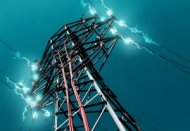 The business sector spends a fortune on power. In fact, the Department of Energy notes that 20 percent of all energy used in the United States last year was consumed by commercial buildings, costing companies a collective $180 billion. This figure alone may inspire corporations to cut down on their energy use, and the worst is yet to come. Cities across the country are expecting a surge in electricity prices this fall, and some communities have already experienced a bump in their utility bills.
The business sector spends a fortune on power. In fact, the Department of Energy notes that 20 percent of all energy used in the United States last year was consumed by commercial buildings, costing companies a collective $180 billion. This figure alone may inspire corporations to cut down on their energy use, and the worst is yet to come. Cities across the country are expecting a surge in electricity prices this fall, and some communities have already experienced a bump in their utility bills.
From sea to shining sea
A May article in San Diego Union-Tribune reported that electricity costs for local small businesses are expected to increase by 7.9 percent by the end of the year, while electricity costs for large businesses are expected go up by 4.9 percent. Businesses in Wyoming will likewise be seeing a more expensive utility bill this month, according to the Wyoming Tribune Eagle. The community's local utility company, Cheyenne Light, is making small rate increases in order to pay for the construction of a new $222 million Cheyenne Prairie Generating Station. The news source noted that these increases will be calculated for each utility company based on its peak daily usage and rate class.
Maine entrepreneurs are also facing dire weather challenges, says a report from MBPN News. The price of electricity is expected to double this winter for commercial customers, and state officials have already made strong recommendations that businesses begin to invest in new technology that might help to offset these cost spikes. These examples of rising electricity costs demonstrate how widespread increases in electricity costs are impacting businesses across the country.
A trend of rising energy costs
Across the United States, prices are increasing mainly because operating costs of generation and infrastructure are all going up as demand increases. Additionally contributing to cost increases is a drop in energy sales. As renewable energy comes online, generators are closing and/or selling less kWh, while still having to provide generating and transmission assets as if those renewable generation plants were not in place because of their intermittent nature.
In the past, residential consumers paid lower rates than commercial consumers but even that is changing as rate structures are calling for all customers to pay real demand-based costs for energy. Increased reliance on natural gas, a so-called cleaner alternative to coal, has also produced energy spikes, especially due to distribution constraints in winter.
Rising costs lead to new solutions
SmartGridNews reports that distributed energy resources or DER such as solar photovoltaic and energy storage are helping customers with the rising costs of energy. The article also notes that distributed energy resources are capable of positively impacting a building's peak load and meeting generation and distribution capacity. Government Technology predicts that distributed energy may even help to transition the economy into reduced dependence on fossil fuels.
"Demand response, energy efficiency, and energy storage are becoming part of contingency plans for closures of existing fossil fuel and nuclear power plants, " said Cedric Christensen, Strategen's director of market development.





